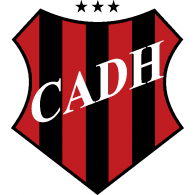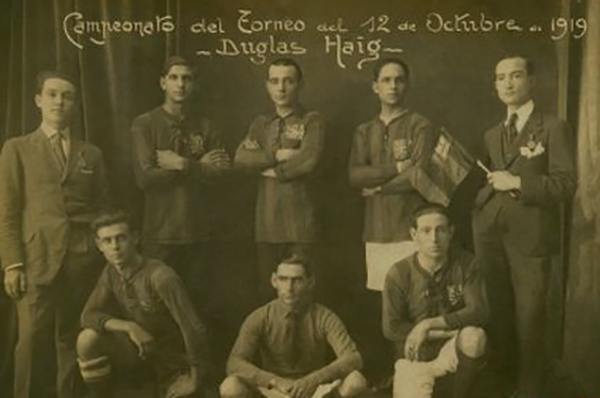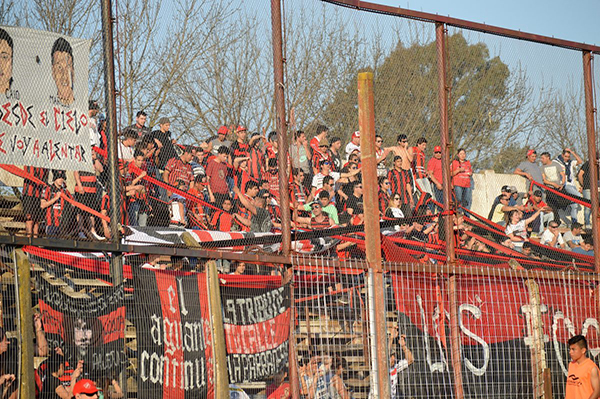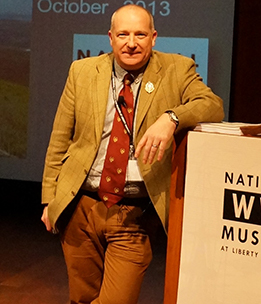Hasta los Fogoneros!
21/02/2020 - 11.48
Clive Harris
Many of our historic football clubs have war memorials or rolls of honour. A number still play at memorial grounds and nearly all, in some way, marked the Great War centenary through commemorative shirts, poppy badges, books and programme articles that ensured their club’s efforts and sacrifices in 1914-18 will never be forgotten. For one football club though the shadow of the Great War will cast forever in its history, its story is fascinatingly unique yet seldom told. This article in some small way sets out to redress that.

Almost 7,000 miles from Charlton Athletic’s famous Valley stadium, itself dug by returning ex-serviceman in 1919, can be found the Buenos Aires suburb of Pergamino. Dating back to the mid 17th century it was named from the Spanish word for ‘Parchment’ by settlers who established a small fortified town on the trade route to Buenos Aires. Today it has a population of over 100,000, primarily still engaged in the agriculture that saw the huge growth of the city when the railways came in 1882. For recreation, the locals can be found flocking to the Estadio Miguel Moralesa, a compact yet extremely atmospheric stadium that, since 1977, has been the home to the wonderfully named Club Athletico Douglas Haig.
Formed on the 11 November 1918, the football club owes its existence to a group of British Railway workers, most notably, the eventual Central Argentine Railway's director, Ronald Leslie.
The 1918 Argentinian Railroad Directory lists Ronald Leslie as a Deputy Traffic Manager, previously of the London Office of the Central Argentinian (British) Railway. Whilst he is credited with the formation of the football club, no less than 30 British employees were listed as living in the Pergamino district at the time.
On the very day that war ended, and victory was assured, these men made the decision to create a football team to enter the local, yet rapidly expanding league. It required the permission of manager Leslie, whose only condition was that it would be named in honour of the victor and Commander-in-Chief, Sir Douglas Haig.
The initial meeting of the club took place in August 1918, in a small room, alongside the water tank that doubled as the machine house for the Central Argentinian Railway. This was the likely origins of the club’s nickname that survives to this day ‘los Fogoneros’ or the Stokers in English. Some four months later, after several meetings FCCA Athletic Club (Argentine Central Railroad) General Douglas Haig was born and the decision to play in Red and Black vertical shirts was taken. Just like AC Milan and perhaps due to several Italian members of the first committee.

The side were hugely successful between 1919 and 1924, regularly winning their league championship. By the mid-1950s, Argentinian sport was undergoing a somewhat nationalistic upheaval. There was increasing pressure to translate any sporting team with a foreign name into Spanish. Douglas Haig, being an actual name initially escaped this decree. However, in 1954 a vote by the then committee decided on changing the club’s name to Bartolomé Miter FC by 43 votes to 18. This short-lived change was so opposed by the club’s supporters that they continued to call their beloved club FC Douglas Haig. When the season started, it soon became apparent the re-branding would not be accepted, so the name once more changed to Club Athletico Douglas Haig, one that remains to this day.
A new stadium was built, largely by supporters in 1977 and then expanded in 1986, to house 18,000 spectators. This coincided with perhaps, the club’s greatest achievement in promotion to the second tier of Argentinian football. It was to remain there for 13 years before relegation back to the third tier, its traditional hunting ground and one where it has stayed ever since.

Its supporters have their own ultra movement known as Douglas Mania (www.douglasmania.com.ar). On the field C.A.D.H have started the 2019/20 season in the Torneo Federal A (North) well, they are currently sitting fourth and just three points off the top.
Both their official and supporters’ websites are very historically aware of Douglas Haig, highlighting his distinguished military career in the Sudan, South Africa and the Great War.
What would the Chief have made of it himself? Well, whilst there appears little evidence that he was an ardent fan of the beautiful game, by the end of the war he certainly understood its importance among the men under his command. Not only did the tactical and doctrinal pamphlets of the day frequently use football analogies but on the very day the club bearing his name was formed his diary entry read,
11 November 1918
...I then pointed out the importance of looking after the troops during the period following the cessation of hostilities. Very often the best fighters are the most difficult to deal with in periods of quiet! I suggested a number of ways in which men can be kept occupied. It is as much the duty of all officers to keep their men amused as it is to train them for war. Staff officers must attend to this. If funds are wanted, GHQ should be informed, and I’ll arrange for the money to be found (G. Sheffield & J. Bourne, Douglas Haig, War Diaries and Letters, 1914-1918, London: Weidenfeld & Nicolson 2005, p487)
A quick look at any regimental history quickly confirms that football kits, boots and balls were high on this list.
I for one have a new Argentinian Football team so Hasta los Fogoneros! or Up the Stokers!
Biography

Clive Harris owns the battlefield tour company Battle Honours Ltd as well as being the Charlton Athletic FC historian and trustee of the supporter led museum. He co-wrote The Greater Game - Sporting Icons Who Died in the Great War and recently completed his MA in History of Britain and the First World War at the University of Wolverhampton.


/prod01/wlvacuk/media/departments/digital-content-and-communications/images-2024/240328-Varsity-Line-Up-Resized.jpg)
/prod01/wlvacuk/media/departments/digital-content-and-communications/images-18-19/220325-Engineers_teach_thumbail.jpg)
/prod01/wlvacuk/media/departments/digital-content-and-communications/images-2024/240515-Spencer-Jones-Award-Resized.jpg)
/prod01/wlvacuk/media/departments/digital-content-and-communications/images-2024/240320-Uzbekistan-Resized.jpg)
/prod01/wlvacuk/media/departments/digital-content-and-communications/images-2024/240229-The-Link-Resized.jpg)
/prod01/wlvacuk/media/departments/digital-content-and-communications/images-2024/240516-Wolves-Pride-Resized.jpg)